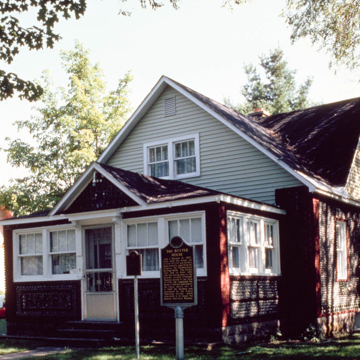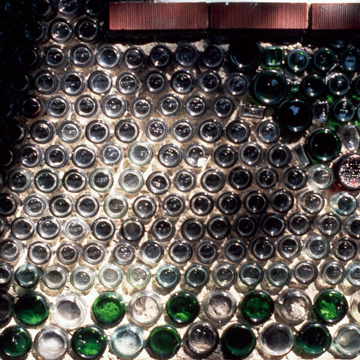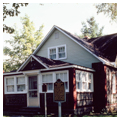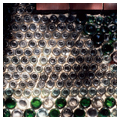You are here
Kaleva Bottle House
Sixty thousand glass bottles sparkle in the exterior walls of the Makinen bottle house. John J. Makinen (1871–1942) designed and built the house to utilize surplus and obsolete bottles from his Northwestern Bottling Works. He used a technique that he developed in 1932 in which he coursed bottles with mortar, and then laid them on their sides with bases pointing out and held in place by the studding. Makinen thought the sealed air space in the bottles would be a natural insulator. Arranged from bottle bottoms across the front of the house are the words “Happy Home.” The Makinen house exemplifies an early-twentieth-century architectural fad for using unusual, eye-catching, often scavenged, materials, such as bottles, petrified wood, corn cobs, and coal for building purposes. The heyday for these exhibitionist constructions came in the 1920s and 1930s, when rapidly increasing auto travel and tourism and the growing use of cameras by the general public encouraged both the construction of highly visible tourist-attracting landmarks and the widespread dissemination of information about them. Today the Kaleva Historical Society operates the house as a museum.
Writing Credits
If SAH Archipedia has been useful to you, please consider supporting it.
SAH Archipedia tells the story of the United States through its buildings, landscapes, and cities. This freely available resource empowers the public with authoritative knowledge that deepens their understanding and appreciation of the built environment. But the Society of Architectural Historians, which created SAH Archipedia with University of Virginia Press, needs your support to maintain the high-caliber research, writing, photography, cartography, editing, design, and programming that make SAH Archipedia a trusted online resource available to all who value the history of place, heritage tourism, and learning.





